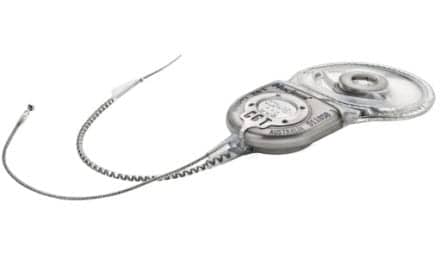THREE OFFICES AND THREE SUCCESS STORIES.
Pricing concerns still weigh heavily on the consumer. The availability of a payment plan came in fourth behind only the hearing care professional’s reputation, products/services offered, and location of the office/practice.
Three practices share success strategies that make them perennial favorites in their communities.
In the world of business, case studies are effective tools for learning how the best of the best companies exist and turn exceptional profits year after year. Though any astute hearing health practice manager or owner can glean pearls of wisdom from Fortune 500 companies, it is also beneficial to consider how those in the industry get new (and existing) patients through the door, turn these visits into sales and get these patients coming back.
Three large practices shared some of their strategies for remaining perennial favorites among the many patients in their service areas.
Livingston Hearing Aid Centers
Livingston Hearing Aid Centers, in operation since 1953, today has five full-time offices throughout West Texas and East New Mexico, plus 10 service centers in this region where patients are seen once a week. The company counts 26,000 patients as clients, says Nikolas Becker, director of operations for Livingston.
Livingston is a third-generation family business that prides itself on the long-term relationships it has established, with some patients having been under the care of their professionals for 20 years, according to Becker.
|
Practitioners at Livingston work hard to establish these relationships—they spend 3 hours per day contacting patients to find out how they’re faring with their hearing aids, whether they were purchased “two days ago or two months ago,” Becker says. “That is more important than getting them in the door. If you can establish that relationship, they’re going to come in the door every time.”
If patients have any problems, the professionals calling try to schedule patients to visit the location nearest them as soon as possible.
Livingston also markets to patients and prospects through a variety of outlets. Via direct mail, patients are asked three times a year to come in for preventative maintenance. Through personal conversation and systematic marketing, Livingston has served multiple generations of families.
Rocky Mountain Hearing Aid Center
Rocky Mountain Hearing Aid Center, with five offices in Montana and 10,000 patients, has been in the community for 36 years. The practice prides itself on counseling, testimonials, and a friendly office environment.
Byron Randall, BC-HIS, owner of the practice, noted that its motto is to “put our patient first and to solve their hearing needs no matter what it takes.” Good communication helps in this regard. His practitioners explain the causes of hearing loss, the audiogram, and the mechanics of the ear, and offer “a very honest appraisal of what hearing aids can either do or not do to help these people.” Rocky Mountain hearing professionals also inform their patients of payment plans. People buying hearing aids are scheduled for a follow-up visit a week later.
Successful counseling leads to happy patients and a wealth of testimonials. Randall counts the use of testimonials as one of the most effective strategies for his company.
During new patient visits, Randall’s staff uses these testimonials to let patients know “what kinds of successes people have had using hearing aids in the past.” They select stories highlighting people who waited a long time to get help for their hearing and, after being fit with hearing aids, are enjoying the social aspects of their lives more.
Randall also prides himself on his practice’s attention to detail when it comes to creating a friendly, familiar atmosphere. For his patients, who are largely over 55, copies of magazines from the 1940s and 1950s—including Life, Look, and Popular Mechanics—are on hand for browsing and taking a nostalgic trip down memory lane. “The older people really enjoy looking at these,” he says. There is also a large jar of candy in the office, from which patients can treat themselves.
In addition to these comforting amenities, the staff strives to facilitate communication. “We try to encourage our patients to interact with us face to face, questioning them on service and how they’re getting along with their hearing aids,” Randall says.
Martin Audiology
Martin Audiology, with four offices in the Texas area and 6,000 to 7,000 patients on the books, also makes its mark by never neglecting the human touch.
“We are going to do everything humanly possible to provide the very best hearing—as close to normal hearing as we can,” says Melody Martin, PhD, AuD. They strive to be prepared for patients by having “everything available—the very best products, services and payment arrangements,” she says.
With a winning combination of products and services, Martin Audiology practitioners approach patients in a way that ensures patients “know that we care about them,” Martin commented, adding that each patient is considered “a member of our family that we want to hear as well as possible.”
To this end, patients are scheduled for visits on a monthly basis—for cleanings, batteries and checkups. Martin Audiology also conducts fundraisers so children with hearing impairments from low-income families can still get the help they need, without falling through the cracks of the system.
Though Martin and her staff regularly raise monies to assist those who need a financial boost, they also count payment plans among the financing options they offer to patients. She feels people like having the option of a no-interest plan because they can purchase hearing aids without using current lines of credit. Additionally, they “don’t have to cash out on a CD,” she says.
Financing Strategy
All of these practices count payment plans among their successful strategies. Having a payment plan in place—and promoting it—adds another approach to your toolbox for success since, according to a recent CareCredit study published in this magazine, 50% of people consider availability of payment plans when searching for a hearing professional.1
Explaining Payment Plans
When preemptively mentioning existence of such plans—whether in advertising, direct mail, front office and phone scripts, lobby signage, or in person—communicating the availability of financing makes it more likely that a patient will stop shopping with you.1
Kathy McCurry, a licensed dispenser for Livingston Hearing Aid Centers, has noticed that sometimes patients immediately ask if they offer a financing plan. Other times, she mentions the option of financing, and patients ask more about it if they need it.
To ensure all patients learn about financing, however, consider using a script. For example, try the following: “Mr. Jones, based on the results of your test and your lifestyle, it seems you require an instrument in each ear. I recommend the following device for your hearing loss. [Show the demo aids to the patient.] Using this demo set, may I show you how your hearing will improve, Mr. Jones? [Insert the demos in the patient’s ears.] These will demonstrate the hearing improvement you will experience. [Confirm that he is hearing better with the hearing aids in place. Once the patient acknowledges better hearing, present the price and payment options.] These are Model XYZ and sell for $3,800 for the pair. You can pay with cash, credit card, or a low monthly payment program we offer.”
Using a script like this may make it easier for patients to agree with your first recommendation of technology, as according to CareCredit data, selling prices increase 37% when patients employ any of the company’s no-interest payment plans rather than MasterCard or Visa.
Another strategy for successful use of payment plans is to scan the demographics of your community for commonalities that might make payment plans attractive to large numbers of people. For example, Becker says that in West Texas and Eastern New Mexico, many people earn a living from agriculture. “Farmers in this area are dependent on the success of crops in order to be successful financially,” he says. These farmers often only get paid once or twice a year; because of this, “financing options are put to great use by farmers in this area.”
Simplify the Process
Making sure to simplify the financing process for patients will keep them coming back and referring patients to you. Fifty-six percent of patients who understand and use financing say they are likely to return to the practice for more services, and 51% would recommend the practice to others, according to the recent financing study. Payment plans are as beneficial for the patient as they are for you, since return rates among those using CareCredit tend to be 75% lower than the industry average. To keep things simple for patients, expedite the paperwork process.
“By the time you get to the point that you’re discussing financing with a patient, they are sick of filling out paperwork,” Becker says. He suggests filling out the form for the patient, then having him or her verify the accuracy of the information. After that, all they have to do is sign off.
Additionally, explaining exactly what the patient is paying for and how much they can expect monthly payments to be takes out all the guesswork. “This sets them on a course to fulfill their financing agreement and avoids any conflicts you may have later down the road,” he says.
CareCredit offers a Payment Calculator at www.carecredit.com that can be used to calculate exact monthly payments and facilitate the dialogue with patients.
There is no one set of specific actions to take to foster a successful practice, but injecting the unique color of your personality into promotional efforts, tailoring your practice to the needs and concerns of those living in your area, and making yourself accessible to the community are some ways to endear you to people with hearing loss. Lastly, as recent research indicates, offering payment plans may give your practice a better shot at providing amplification to more patients and increase satisfaction with your practice, as well as referrals.
Reference
1. Campbell-Angah, D. Study points to the value of third-party payment plans. The Hearing Review. 2006;13(6):62-64.
Correspondence can be addressed to HR or Danielle Campbell-Angah at [email protected].






